
Here’s a board full of cheeses, some of which may start with T.
©MaraZe/Shutterstock.com
Historians still don’t know where cheese was first made. Chances are it wasn’t deliberately made at all. Since animal stomachs were often used to store food, yak/goat/buffalo/cow/camel/sheep’s milk was likely poured into a ruminant’s stomach, wherein it separated into curds and whey thanks to the action of rennet or another enzyme. Thus, cheese was born. Whenever this happened, it was certainly long ago, for there is mention of cheese from 5500 BC. There are more than one thousand varieties of cheese, and it seems every country on earth has its own types. Here are some cheeses that start with T.
1. Taleggio
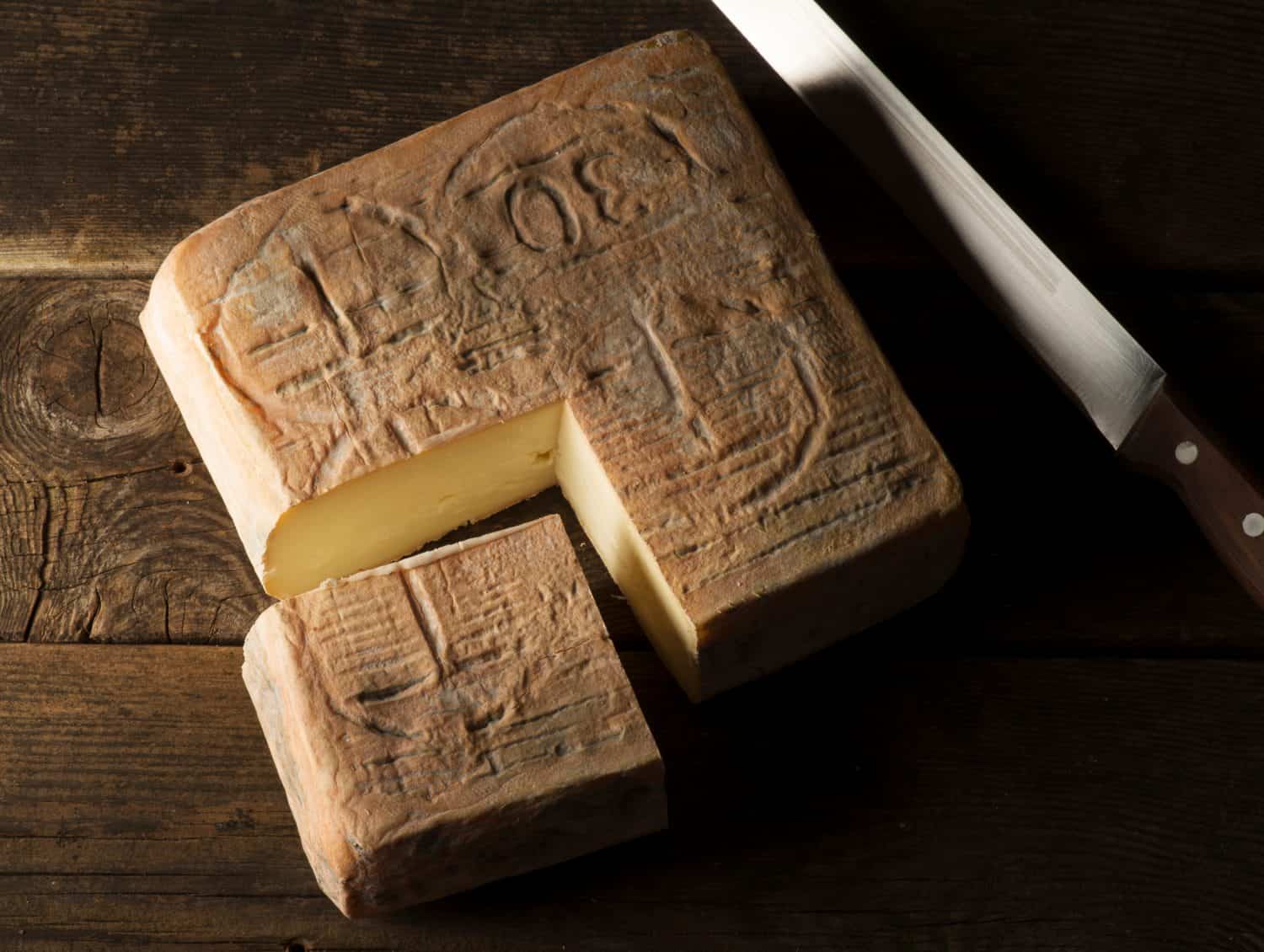
People have been eating this cheese since antiquity.
©Mauro Pezzotta/Shutterstock.com
Taleggio cheese has been around since antiquity and was mentioned, if not enjoyed, by such luminaries as Pliny the Elder. Once, it was only available in Italy’s Val Taleggio. It’s semi-soft, has a notably strong smell but a deliciously mild taste. It’s also smear-ripened, which means that it’s washed from time to time with brine, specifically seawater, as it matures. Traditionally, the cheese is ripened in caves on wooden shelves. It takes six to 10 weeks to ripen, and the seawater both prevents mold and gives the cheese’s thin crust a rose or orange color. Eat Taleggio out of hand or grated over salads or polenta.
2. Tete de Moine
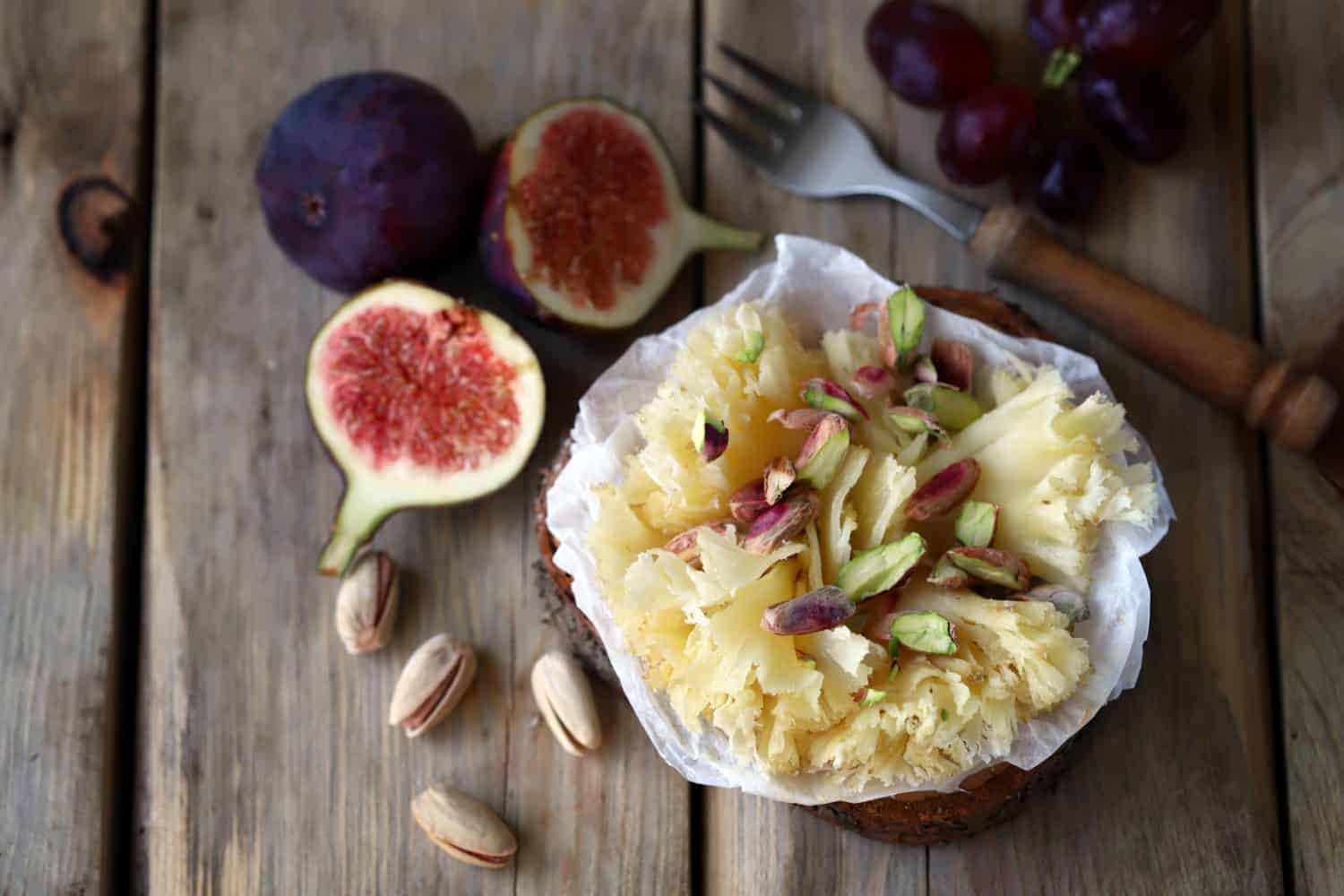
This cheese is prepared by shaving it.
©Sunvic/Shutterstock.com
This cheese, whose name means “monk’s head” in French, is from Switzerland. It’s an old cheese that was created in the 12th century by the religious of Salcourt. Specifically, the birthplace of this semi-hard cheese was the Bellelay Abbey. People used the cheese to pay rent, settle legal cases, and as gifts to nobility. Tete de Moine was even used as money.
The cheese is made from cow’s milk. The crust is reddish brown and firm, and the cheese itself is a bit sticky, a bit moist and can be quite salty. Traditionally, Tete de Moine isn’t cut but pared with a special instrument. It in fact gets its name for the way it was prepared. The cheese was shaved much like a monk’s head was shaved to create a tonsure. Eat it out of hand with a dry white such as Sauvignon Blanc.
3. Tignard Blue Cheese
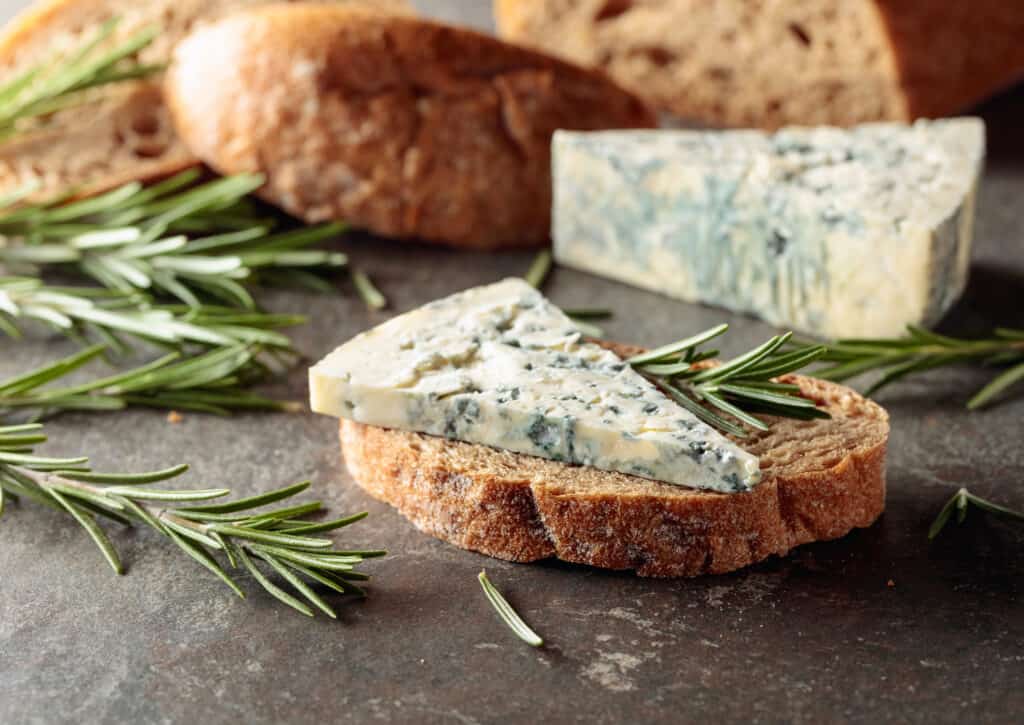
Eat this blue cheese on crackers or fresh bread.
©iStock.com/igorr1
This French cheese that starts with T is traditionally made from goat’s milk, though it can be made by a mix of goat, sheep, and cow’s milk. To give it its blue veining, it is inoculated with a mold called Penicillium roqueforti, which is from the same family that goes into making life-saving penicillin. This inoculation happens while the cheese is coagulating. Since the mold needs oxygen, the cheese is left to mature in well-aerated cellars. It’s a semi-soft cheese that melts beautifully in cooked meals and is crumbled over salads, placed on crackers, or eaten out of hand. Tignard Blue, like many French blue cheeses, is also called a flower cheese.
4. Twaróg
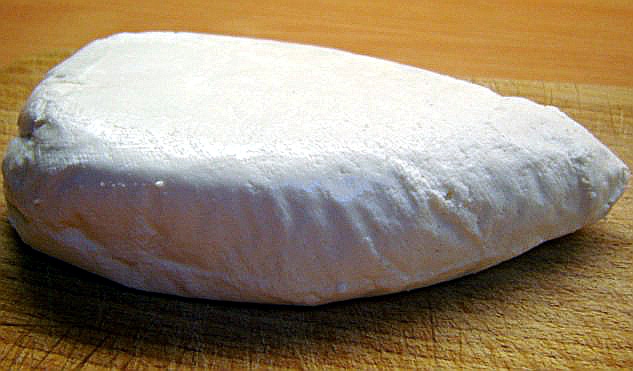
This cheese is traditionally wrapped in cheesecloth and shaped into a wedge.
©Kpalion, Public Domain – License
This cheese is the Polish version of a type of cheese called quark. Quark is made when Lactococcus bacteria is added to milk. This bacterium consumes the milk sugar and sours the milk. Some cheese makers also add rennet, but this isn’t necessary. Then, after the milk curdles, it’s strained. This leaves the cheese soft, white, and fresh. In Poland, the tradition is to wrap the cheese in cheesecloth and shape it into a wedge. Herbs and fruit are often added to Twaróg, and it can be an ingredient in just about everything including sandwiches, desserts, salads, and other dishes. In Poland, the cheese is used to make dumplings or mixed with mashed potatoes and used to stuff pierogis. The Russian version of Twaróg is called Tvorog, and it’s used to make cakes and to stuff blinis.
5. Tybo

This cheeseboard has a selection of cheeses waiting to be enjoyed. Tybo is the pale cheese in the back.
©KGBR/Shutterstock.com
Enjoyed since the Middle Ages, this semi-hard cheese hails from Denmark. It’s made of cow’s milk. It has a creamy color and sometimes comes with caraway seeds. Its rind is yellow, and the paste has holes much like Swiss cheese and is delightfully fatty. Its fat content can range as high as 50 percent. Tybo has a mild but salty taste and usually comes in logs or bricks. The cheese is excellent for sandwiches, salads and soups, and it’s especially popular in meatballs. Don’t hesitate to throw the rind into a pot of soup when the paste is gone to give the meal an extra heartiness.
6. Triple Creme
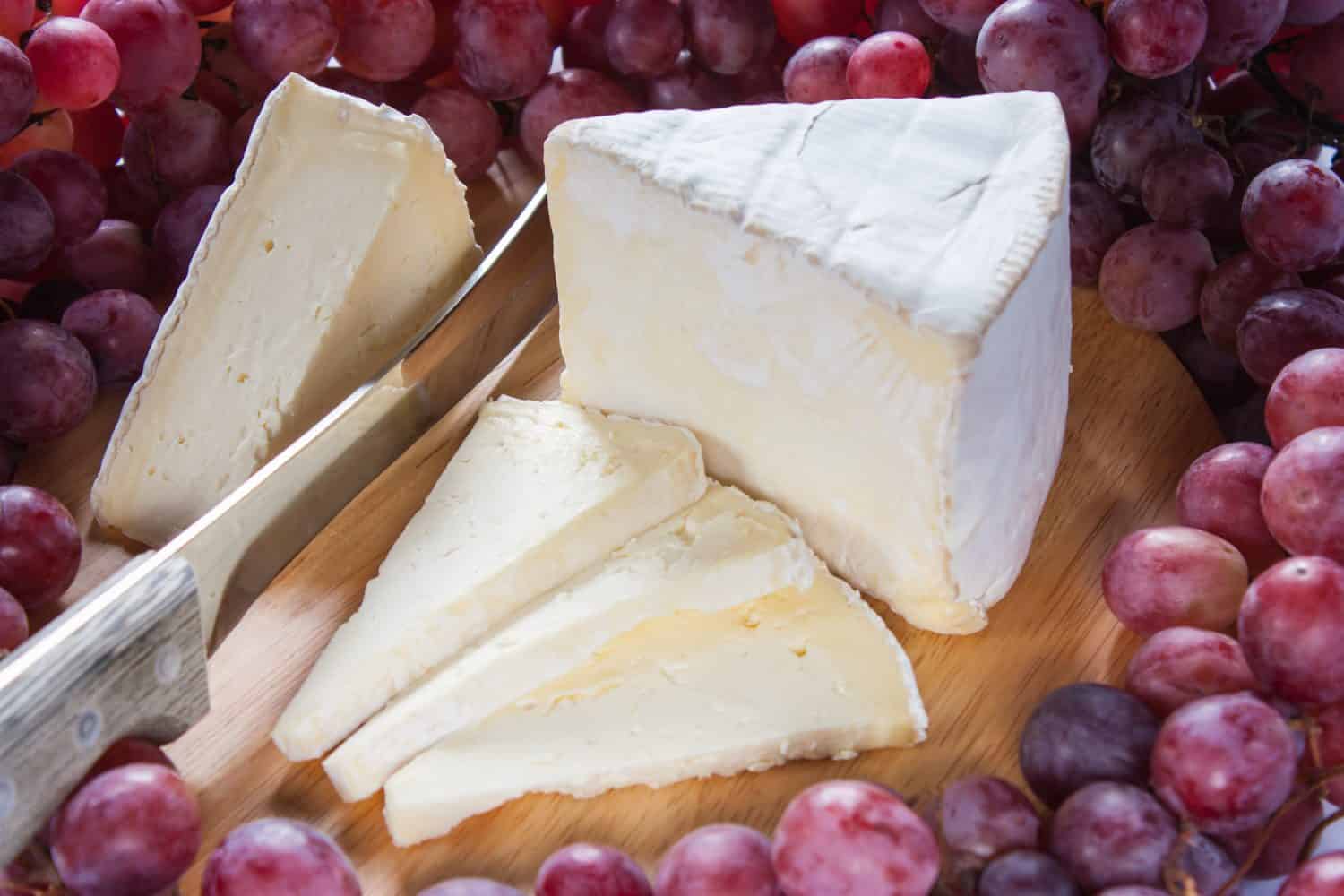
St. André is a kind of triple creme cheese.
©Magnago/Shutterstock.com
These cheeses are the ultimate in cheesy luxury. To be a triple creme cheese, the fat content needs to be at least 75 percent. This makes their rich flavor and texture nearly decadent. Traditionally, they are made exclusively from raw cow’s milk and the cream of raw cow’s milk. They have a bloom on their rinds formed by molds and yeast. Though these cheeses are regulated by law in the countries where they originated, once outside the regulations can become a bit lax. For example, a South American triple creme can have far less fat content than is traditional, and there are places where the cheeses are made from goat’s milk. Triple creme cheeses melt like nothing else and leaving them at room temperature till the paste turns ooey-gooey and a tiny bit sour is an unparalleled delight. Some triple creme cheeses are:
- Brillat-Savarin
- Saint André
- Fromagerie Rouzaire Brie de Nangis
- Mascarpone
- L’Explorateur
7. Tulum
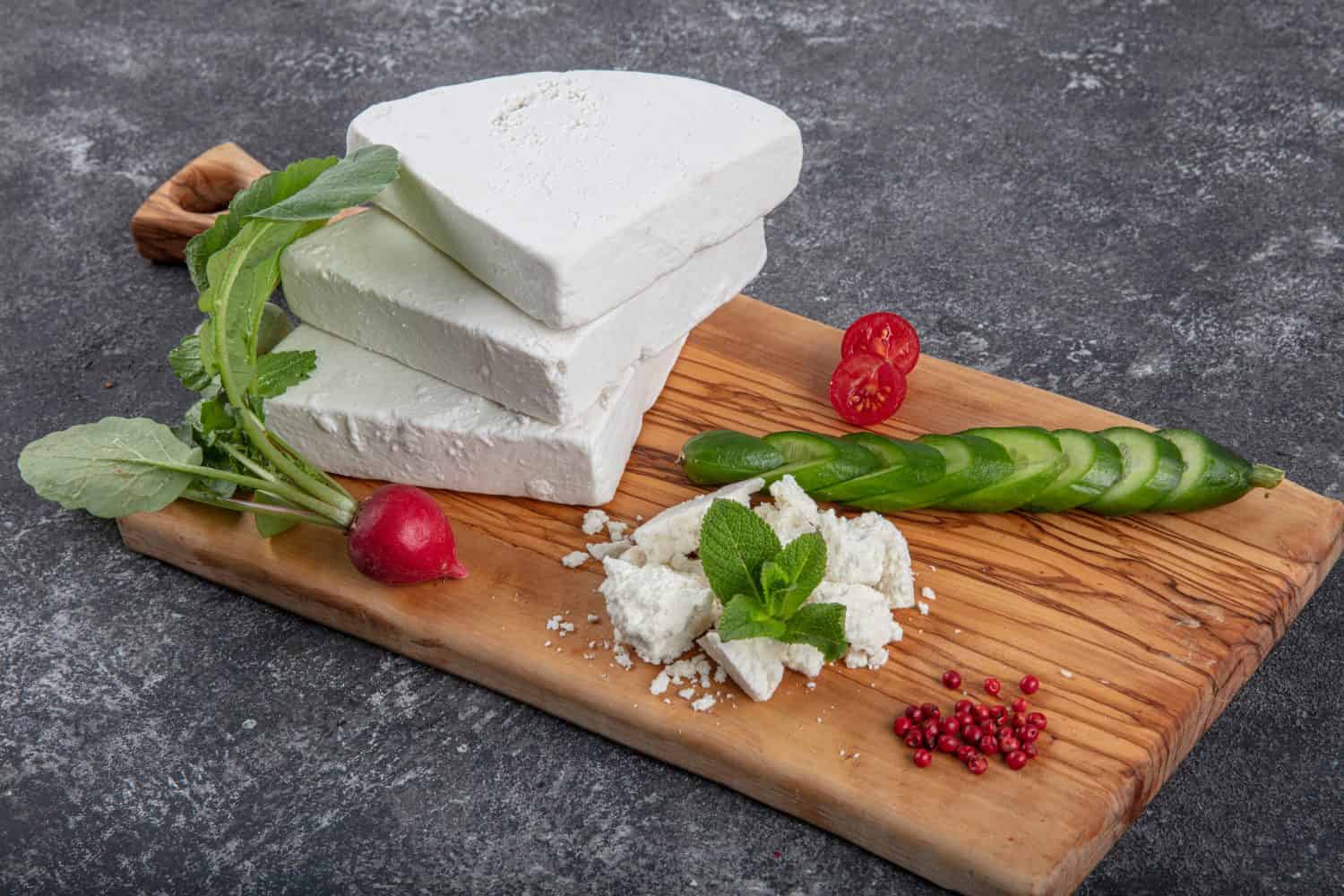
Tulum cheese is from Turkey.
©Mehmet Cetin/Shutterstock.com
This cheese of Turkish origin is traditionally made of goat’s milk and often left to ripen in goatskin. The goatskin of curds is hung in a cave or other cool place whose temperature stays between 50- and 54-degrees Fahrenheit. It’s left to ripen for six months. The taste of Tulum cheese depends on which part of the country it was made in. Some areas have different ways of ripening the cheese besides putting it in goatskin. For example, in Izmir the curds are put in cans with brine.
Tulum cheese is crumbly, with a tanginess that recalls Feta. It also has a strong smell that’s described as earthy. This cheese that starts with T is great served with Mediterranean foods such as olives and tomatoes.
8. Tolminc
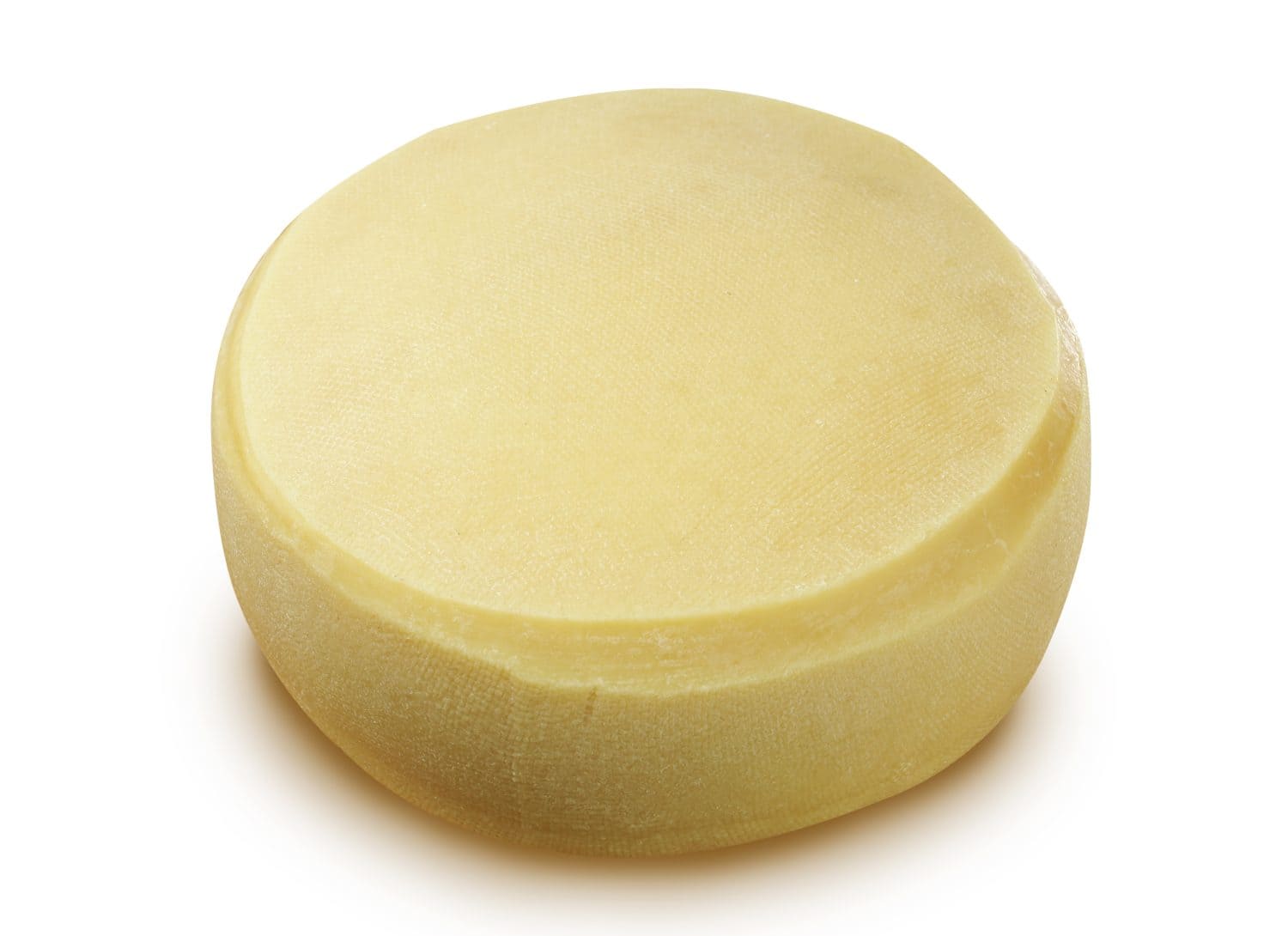
Tolmin is from Slovenia and goes well on crackers.
©JRP Studio/Shutterstock.com
This Slovenian cheese is made from raw cow’s milk. It’s a hard cheese, is produced in the Soča Valley and is named after the city of Tolmin. As a product with a Protected Designation of Origin, its production must happen in the Upper Soča Valley, which lies in the Alps and is near Slovenia’s border with Italy. The Cika cows that produce the cheese are well adapted to grazing in Alpine meadows. Like Tete de Moine, Tolminc cheese was also used to pay taxes.
This cheese that starts with T is described as having a strong, earthy fragrance and a taste that ranges from sweet to a little spicy. It goes well on crackers or homemade bread with a dollop of jam.
9. Tilsiter

Here is a lacy slice of Swiss Tilsiter cheese.
©baibaz/Shutterstock.com
Also called Tilsit cheese, this cheese was created by the Westphal family in the middle of the 19th century and bears the name of the Russian city Tilsit. It’s a semi-hard cow’s milk cheese whose paste is full of cracks and eyes and can have as much as 60 percent fat. The rind is dark yellow, and the flavor is described as strong. Sometimes the cheesemaker adds peppercorns or caraway seeds. Tilsiter melts beautifully and is added to salads, hamburgers, potatoes, and sauces.
Tilsiter is made in Middle, Eastern and Northern Europe. There are three types of Swiss Tilsiter. There’s a mild type that’s created from pasteurized milk, a stronger version made from raw milk, and another version made with pasteurized milk and cream. You can tell them apart from their green, red, and yellow labels.
10. Tomme de Savoie
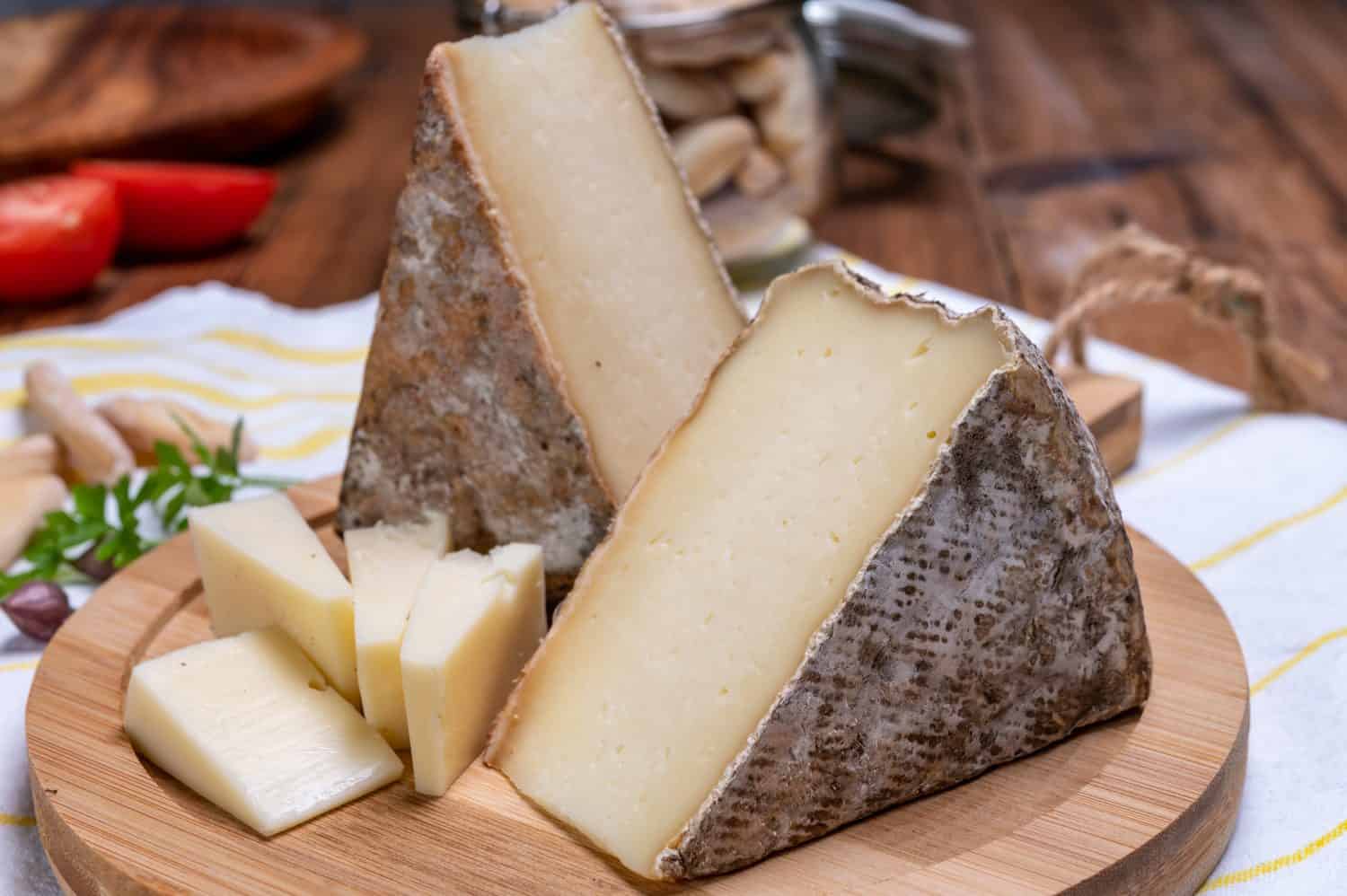
This cheese has a thick rind and nutty flavor.
©barmalini/Shutterstock.com
This ancient cheese originated in the French alpine city of Savoy. The way to make this semi-soft cheese is unusual because it’s made from the milk that remains after cream is churned to make butter. Because of that, Tomme de Savoie doesn’t have as much fat as some of the other cheeses discussed. It has a firm, beige paste and a notably thick taupe-colored rind with a bloom of mold. The taste depends on whether the cows ate hay in the winter or grass in the summer. Overall, the taste of the cheese is tangy or nutty, with notes of summery grass, dried fruit, mushrooms, or straw. It’s great to eat out of hand or with bread, fruit or sausage.
11. Trappist Cheese
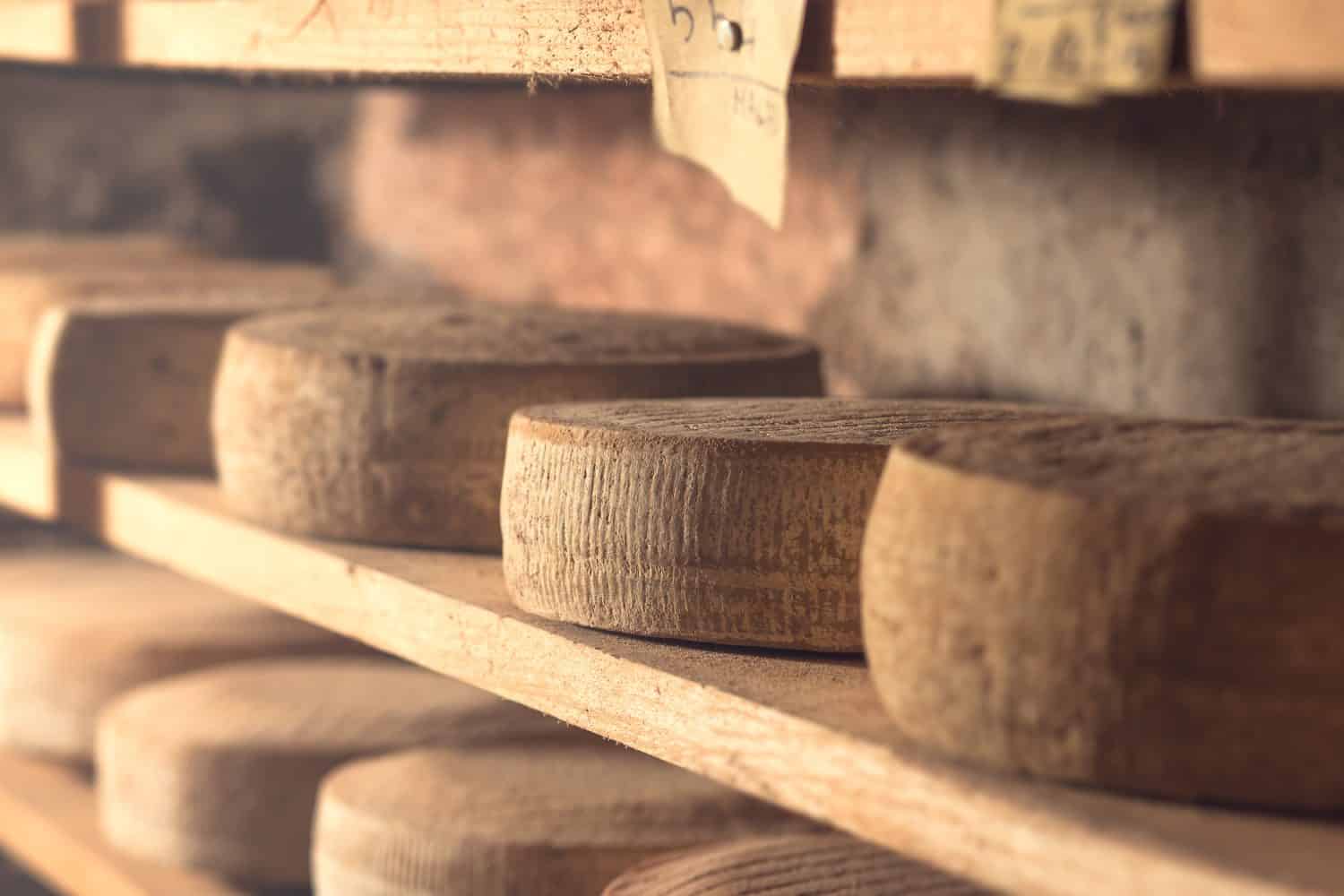
This type of cheese was developed by French monks in the 18th century.
©fran_kie/Shutterstock.com
Like Tete de Moine, Trappist cheese was invented by men who’d devoted themselves to religious life, specifically cloistered monks. Not all Trappist cheese is alike. Some types are semi-hard while others are semi-soft, and they come in a wealth of flavors and textures, from very mild to very strong to smooth and creamy to grainy. Food historians believe that Trappist cheese was first made by French monks in the abbey of Notre Dame de Port Salut. Eventually, the recipe for the cheese spread, and it is now produced in Europe, the United States, and Canada. Every area has their own version of the recipe, though the original cheese is now sold as Port Salut.
Trappist cheese is made from cow’s milk. It can be pasteurized or raw. The cheese is aged for a month, and during that time the rind is washed with alcohol or brine. The brine lends the cheese a sharper flavor. Eventually, the cheese is yellow, with small eyes. It is sold as rounds, rectangles, or covered in wax. Trappist cheese is excellent to eat out of hand or on crackers or bread. It adds flavor to sandwiches, melts well, and is a great addition to savory meals.
12. Transmontano Goat’s Cheese

This goat cheese from Portugal goes well with a robust red wine.
©Adriao, CC BY 3.0 – License
Created with raw goat’s milk, this Portuguese cheese ranges from semi-hard to very hard. Both the rind and the paste are white, and the paste has a few eyes. The goats whose milk go into this cheese are Cabra Serrana, and they graze on such plants as heather, herbs, and wild grasses that give the cheese its particular flavor. Transmontano goat cheese also has a PDO, or Protected Designation of Origin that ensures that it is made to standards set down by the European Union. People describe the taste as “clean,” with a bit of spiciness. Its fragrance is intense but pleasing. Eat the cheese out of hand, as part of a plate of appetizers or at the end of the meal. This cheese goes very well with a Portuguese port.
The photo featured at the top of this post is © Mauro Pezzotta/Shutterstock.com
Thank you for reading! Have some feedback for us? Contact the AZ Animals editorial team.







